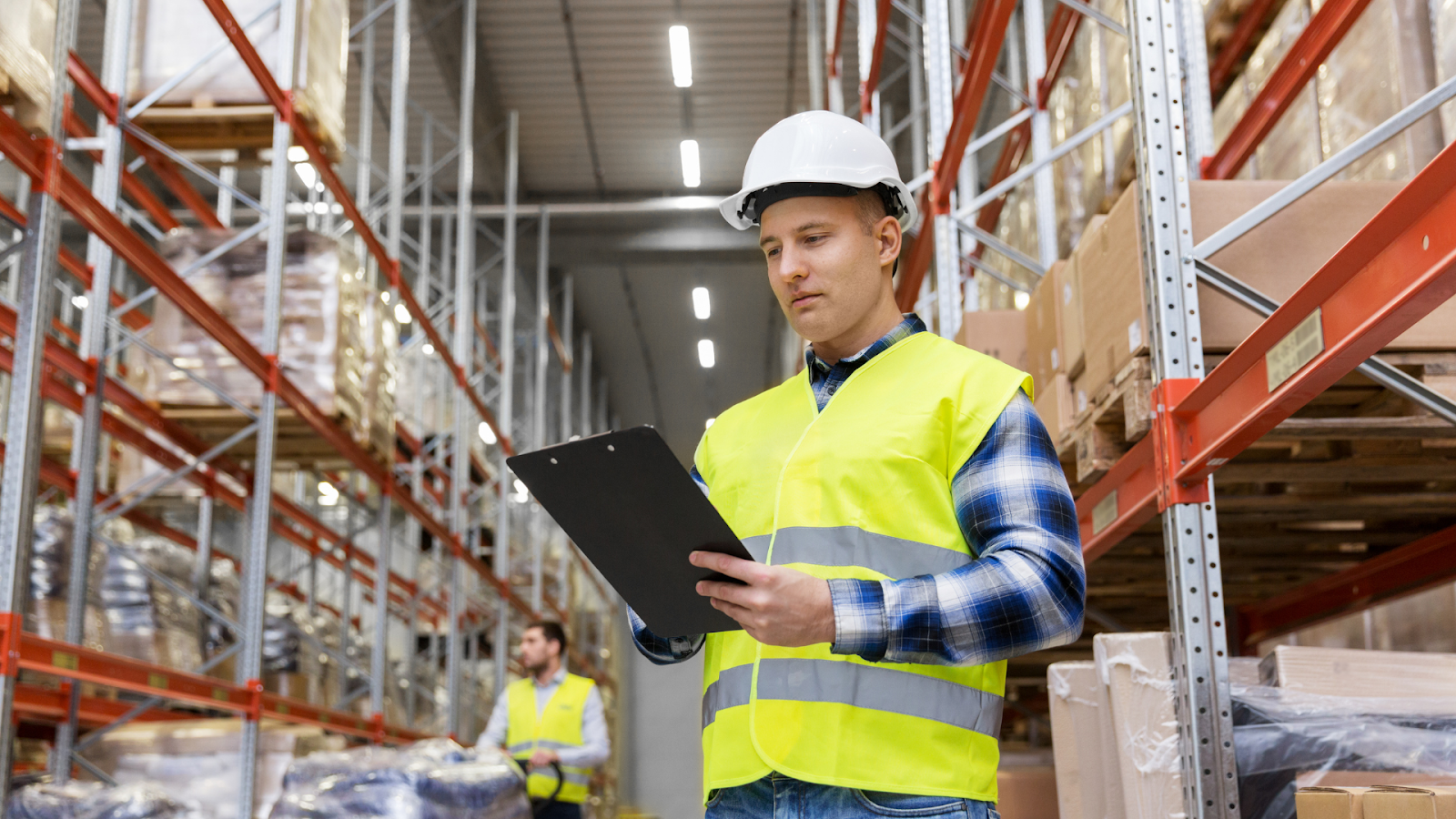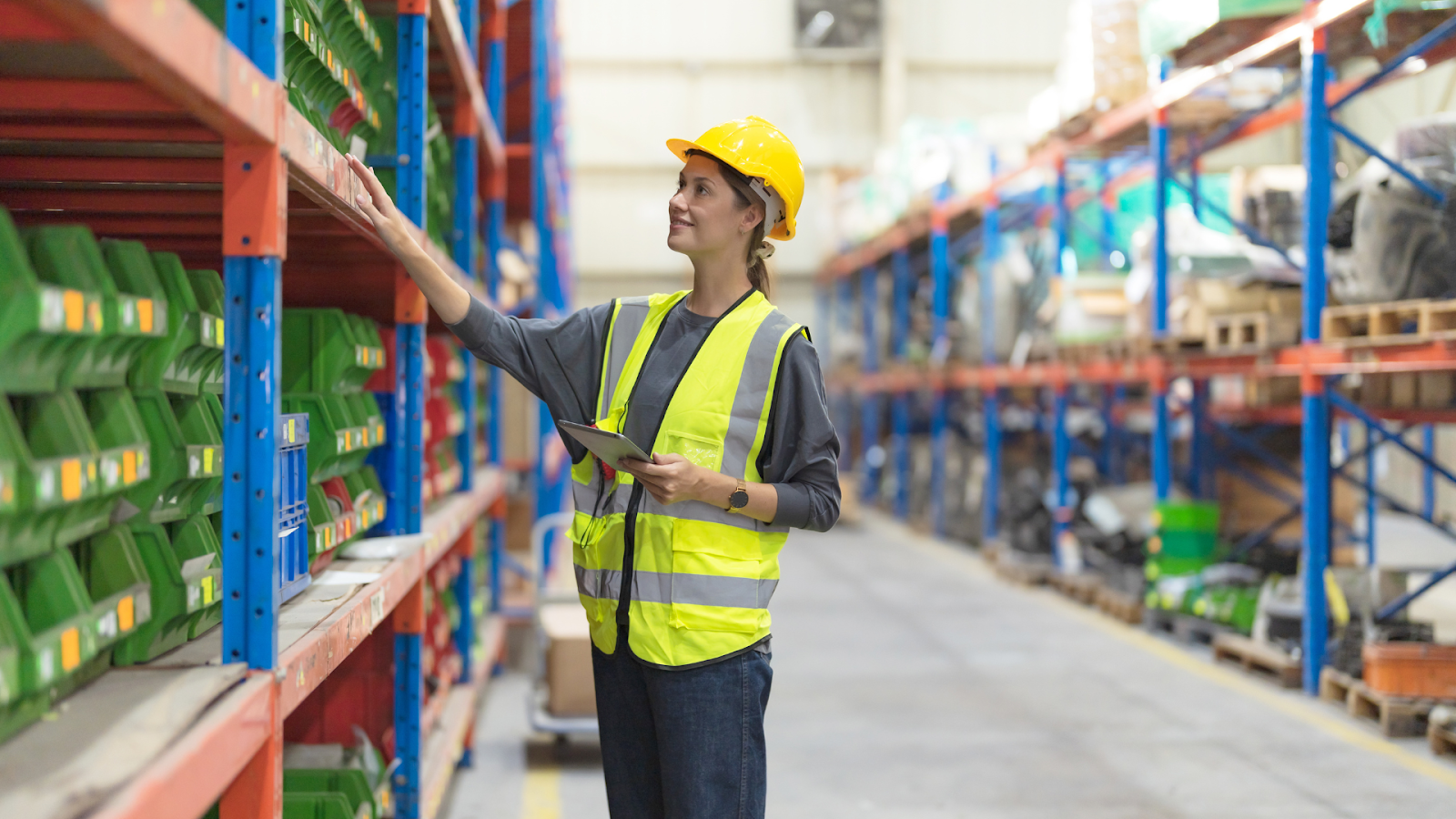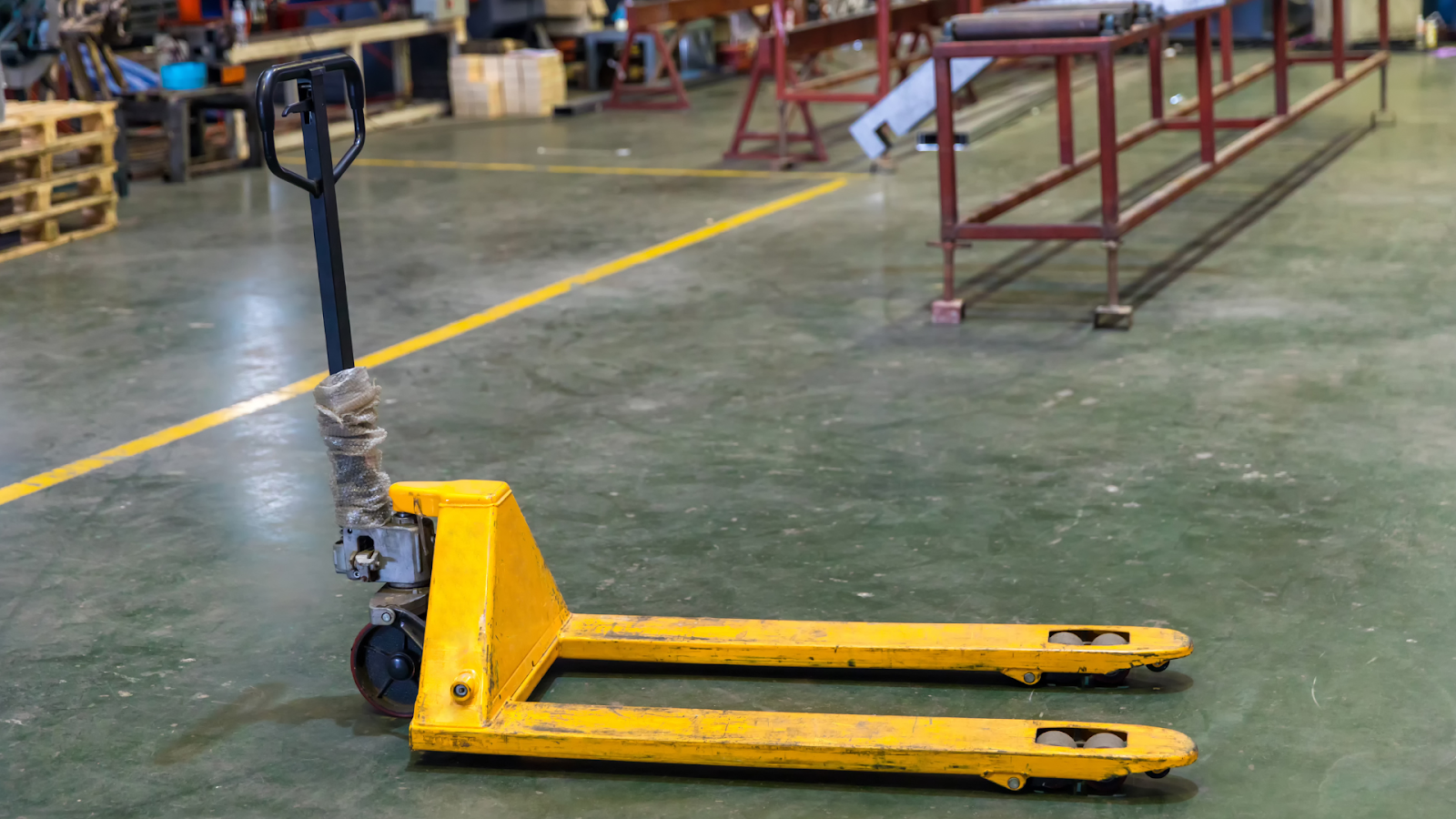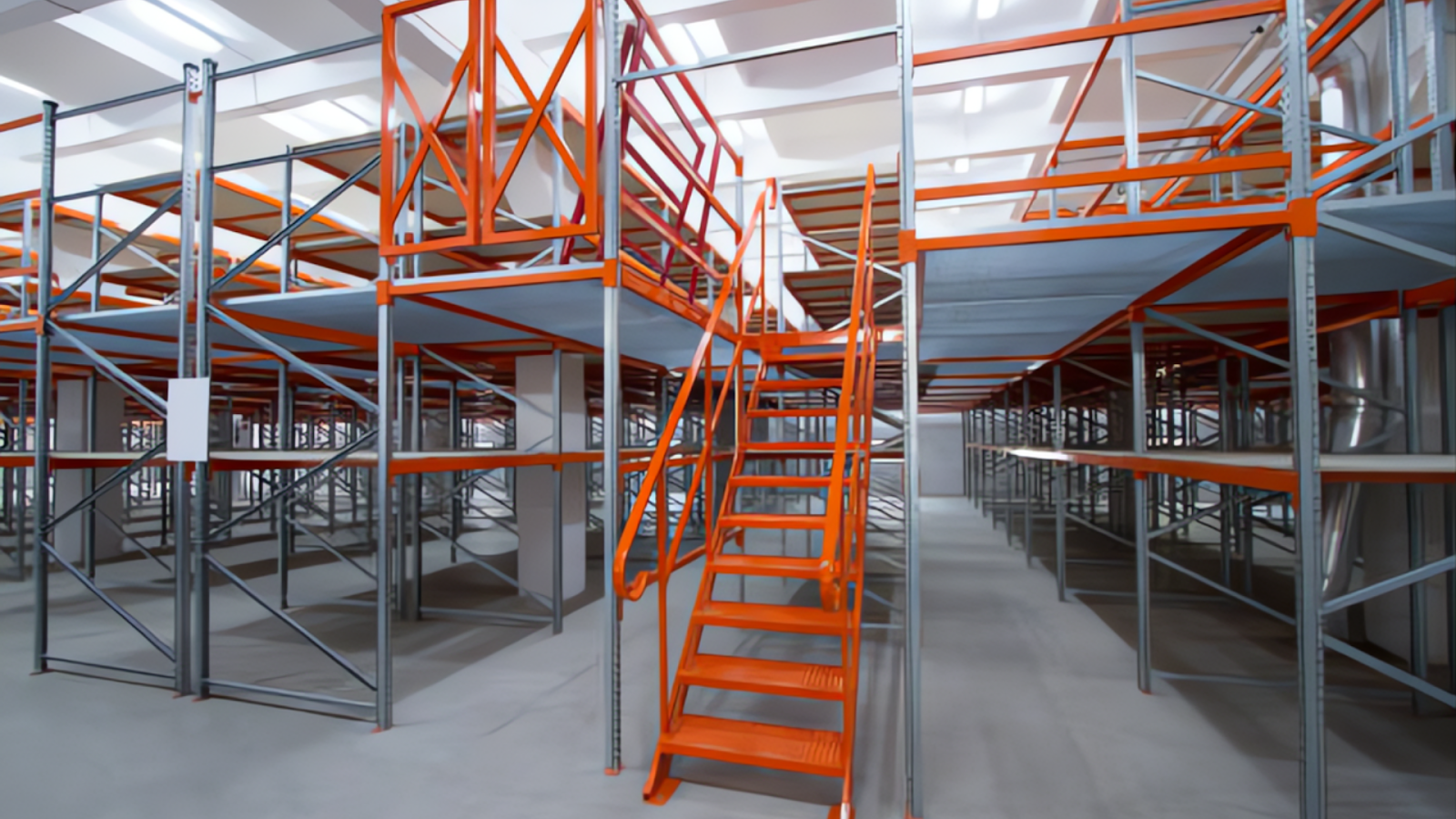Key Takeaways
Keeping a warehouse safe does not only mean adhering to rules. It’s about taking care of your people. When safety is taken seriously, employees stay healthy, morale stays high, and operations run without costly interruptions.
As warehouses implement automation, AI, and robotics, the risks are changing too. Technology can reduce human error, but it also brings new hazards that can’t be ignored.
Warehouse managers and safety teams thus need smart, practical safety practices that protect their people and keep the business moving smoothly.
Also Read: How to Improve Warehouse Picking Efficiency with the Right Equipment

Warehouse safety impacts both productivity and employee well-being. Follow these essential tips to reduce accidents, maintain compliance, and keep your operations running smoothly.
Safety training is essential to minimize workplace injuries. Without a well-educated workforce, even the best safety measures will fall short. Training helps employees recognize risks and equips them with the skills to respond effectively in emergencies. Here’s how to ensure your training program is effective:
Regular upkeep is key to preventing accidents and ensuring equipment operates safely. Warehouse equipment breakdowns are often a leading cause of workplace injuries, making it important to keep all machinery running smoothly. Here’s how to stay ahead of maintenance issues:
The layout of your warehouse directly impacts safety and efficiency. A cluttered, poorly organized warehouse can lead to accidents and slowdowns. A well-organized space promotes safe, smooth workflows. Here’s how to optimize your warehouse design:
Personal Protective Equipment (PPE) is essential to protect workers from hazards. PPE reduces the risk of injury from falling objects, machinery, or hazardous materials. Enforcing strict PPE policies ensures everyone is equipped to stay safe. Here's how to maintain compliance:
Clear communication is essential for identifying and addressing safety risks. Without a solid communication plan, hazards can go unnoticed, leading to accidents. To improve safety communication, follow these guidelines:
Also Read: 5 Signs Your Warehouse Is Hurting Your Productivity—and How to Fix It
Environmental factors such as lighting, temperature, and air quality can influence safety. Poor conditions can lead to accidents, fatigue, and health problems. To maintain a safe working environment, monitor and control these conditions:
Safety technology is evolving, offering new ways to protect workers and reduce risks. Technologies like wearables, AI, and automated systems are becoming non-negotiable tools in enhancing warehouse safety. Here's how to integrate these innovations:
Being prepared for emergencies is important to minimizing risks and ensuring worker safety. Well-structured emergency plans can save lives during critical incidents. To ensure readiness, implement these practices:
Safety should be an integral part of your warehouse culture. When safety is a shared responsibility, employees are more likely to follow protocols and actively look out for each other. Here’s how to promote this culture:
Regular audits are essential for identifying weaknesses in your safety practices. They ensure that your safety measures are continuously updated and effective. To maintain a safe environment, follow these steps:

Warehouses present various safety hazards like slips, trips, forklift accidents, and manual handling injuries. Identifying these risks and implementing effective prevention strategies can significantly reduce accidents and enhance workplace safety. Here are key hazards and actionable tips for minimizing risks.
Wet floors, cluttered aisles, and uneven surfaces are common causes of accidents in warehouses. Workers can easily trip over obstacles or slip on wet floors, leading to injuries and operational disruptions.
Prevention:
Forklift accidents are one of the leading causes of injuries in warehouses. These accidents often occur due to unsafe operation, lack of training, or poorly maintained equipment. Forklifts can be dangerous when workers are not properly trained or when safety protocols are ignored.
Prevention:
Improper shelving, overloaded racks, and poorly stacked materials increase the risk of objects falling from heights, which can cause significant injuries. Items falling from shelves or storage areas may strike workers or obstruct pathways, causing further accidents.
Prevention:
Lifting heavy or awkward objects improperly is a common cause of musculoskeletal injuries, especially in environments that require repetitive lifting. This leads to long-term health issues, including strains, sprains, and back injuries.
Prevention:
Mishandling hazardous chemicals, improper storage, or inadequate protective equipment can expose workers to dangerous substances. This can lead to burns, respiratory problems, or long-term health issues, particularly in environments that store or use chemicals regularly.
Prevention:

OSHA compliance is essential for ensuring warehouse safety. By following key regulations for equipment maintenance, chemical handling, and emergency procedures, warehouse managers can reduce risks and protect workers. Here's a breakdown of the essential standards.
Warehouse managers must comply with OSHA's regulations to protect workers and avoid legal issues. Key regulations include:
Proper equipment use and maintenance are important for safety. Adhere to these standards:
By following these standards, managers can maintain a safer, compliant warehouse environment.
Also Read: Top 7 Must-Have Material Handling Tools for Every Warehouse

To help you stay compliant with OSHA regulations and ensure your warehouse remains safe, we’ve created a Comprehensive Warehouse Safety Inspection Checklist. This checklist covers daily, weekly, and monthly tasks to ensure your warehouse is operating at its best.
The future of warehouse safety is shaped by AI, wearable technology, and predictive models. These innovations help reduce risks, improve warehouse efficiency, and prevent accidents before they happen. Here's a look at the key trends.
AI and robotics are transforming warehouse safety by detecting risks in real-time. These technologies help reduce human error, automate repetitive tasks, and improve operational efficiency, leading to a safer work environment.
Wearables that monitor worker health, fatigue, and vitals are gaining traction in high-risk environments. These devices alert supervisors when intervention is needed, helping to prevent accidents and ensuring worker safety.
By using data analytics, predictive safety models can forecast potential incidents. This allows warehouse managers to implement preventive measures before accidents occur, enhancing overall safety and minimizing risks.
Accidents due to inadequate safety measures can disrupt your operations and hurt your bottom line. At Source Equipment, we specialize in providing OSHA, ANSI, and RMI-compliant warehouse racking accessories that help prevent these risks.
With over 30 years of expertise, our products, like pallet stop beams, rack guards, and wire decks, are made with 100% U.S.-sourced steel for superior durability and safety. Partnering with industry leaders like Husky Rack & Wire and Presto Lifts, we deliver solutions that optimize both safety and efficiency.
As warehouse operations advance, integrating technologies like AI, wearables, and predictive safety models will be key to enhancing safety. These innovations allow warehouse managers to create safer, more efficient work environments, reducing risks while improving productivity.
At Source Equipment, we’re committed to staying ahead of these advancements. As your trusted partner, we offer a wide range of high-quality, customizable solutions, designed to keep your warehouse both safe and efficient. With our expertise and top-tier products, you’ll be equipped to adopt the future of warehouse safety and productivity.
Contact us today for a custom quote or to explore our wide range of safety-compliant equipment solutions.
Key warehouse safety rules include comprehensive employee training on equipment operation, proper use of PPE, maintaining clear walkways, regular equipment inspections, and following strict forklift safety protocols. These measures minimize accidents, enhance safety, and improve productivity.
During warehouse construction, focus on structural integrity, clear aisle layouts for efficient movement, and fire suppression systems (sprinklers, extinguishers). Additionally, make sure there's proper lighting and ventilation and ensure emergency exits are easily accessible for worker safety and evacuation.
Warehouse managers can improve safety by implementing consistent safety training, ensuring regular maintenance of equipment, and enforcing PPE policies. They can also conduct frequent safety audits and promote a safety-first culture through open communication and proactive hazard identification.
A comprehensive warehouse safety audit should include equipment condition checks, fire safety measures, emergency exit accessibility, PPE compliance, hazardous materials handling, and employee training effectiveness. Regular audits identify gaps and ensure safety standards are met.




Ready to Upgrade Your Process Operations?